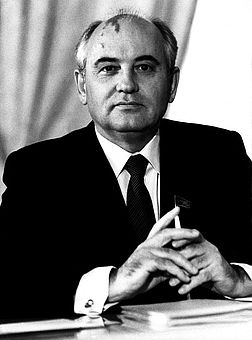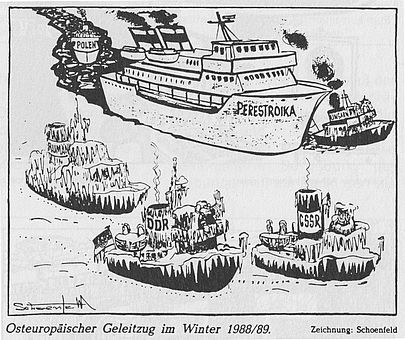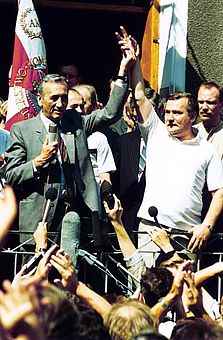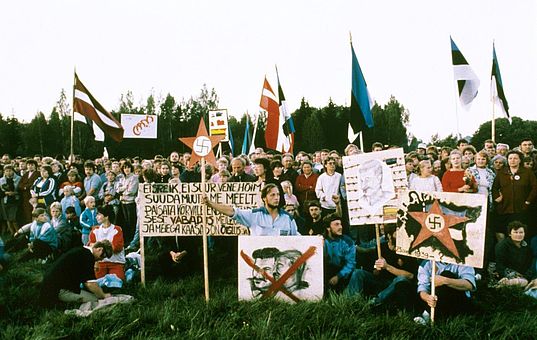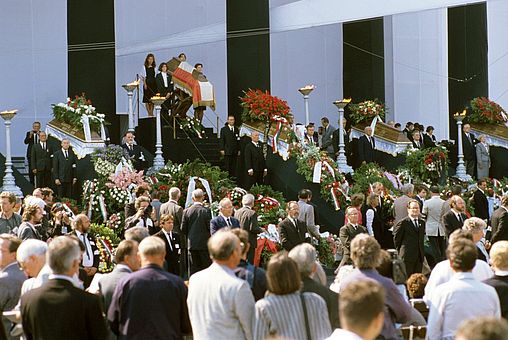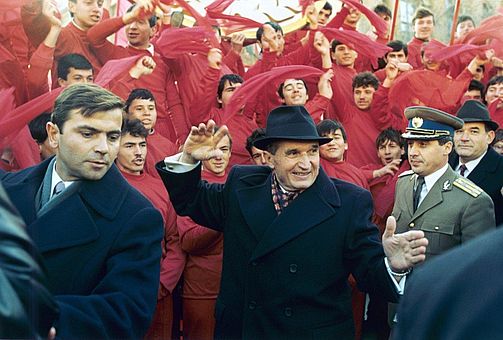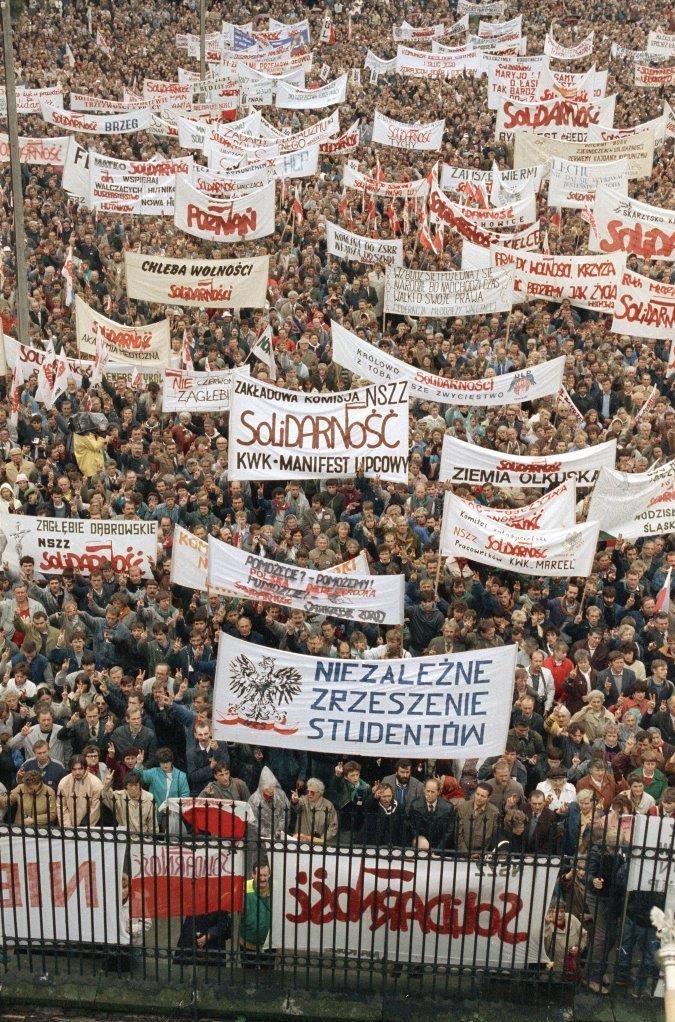
- Home >
- Awakening >
- First steps to revolution >
- Crisis in the Eastern Bloc
The party head Mikhail Gorbachev wanted to maintain communist rule. In 1985 he introduced a process of domestic reforms in the Soviet Union. including opening up the country's politics and economy to the West. The Soviet reform policy revolved around perestroika (restructuring) and glasnost (openness). This development facilitated changes in the other Eastern Bloc states, which were now allowed to take their own development paths.
In early 1989 the political and economic crisis in the Eastern Bloc intensified. It became clear that groundbreaking reforms were necessary. In Poland, the independent trade union Solidarnosc forced the regime to the negotiating table, achieving posts in the government by means of elections. Under pressure from the democratic opposition, the political leadership in Hungary began to implement gradual reforms. The Soviet Union began to show signs of disintegration, with the Baltic republics demanding independence. The heads of state and the communist parties in the GDR, Czechoslovakia, Bulgaria and Romania, however, refused to allow change.
